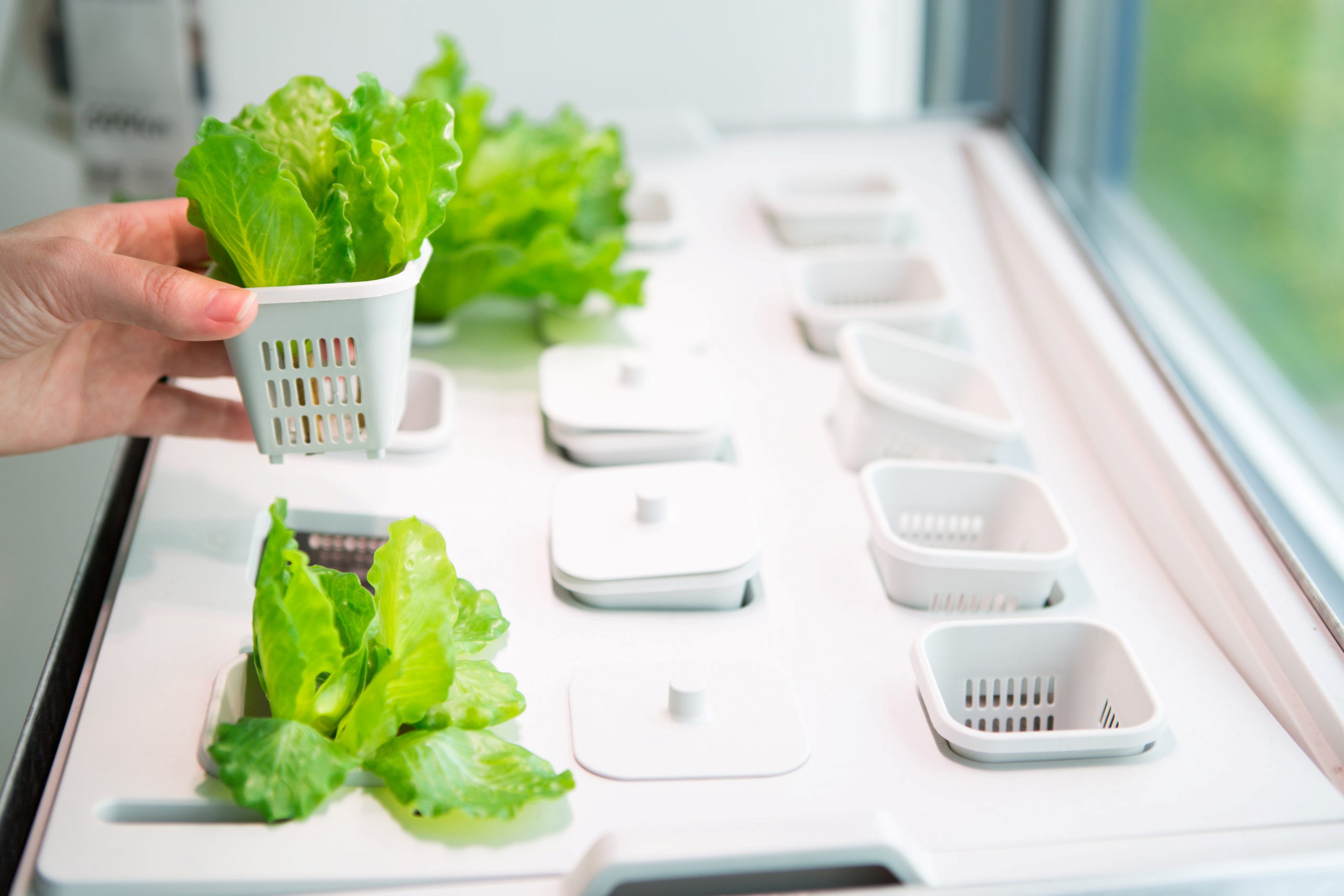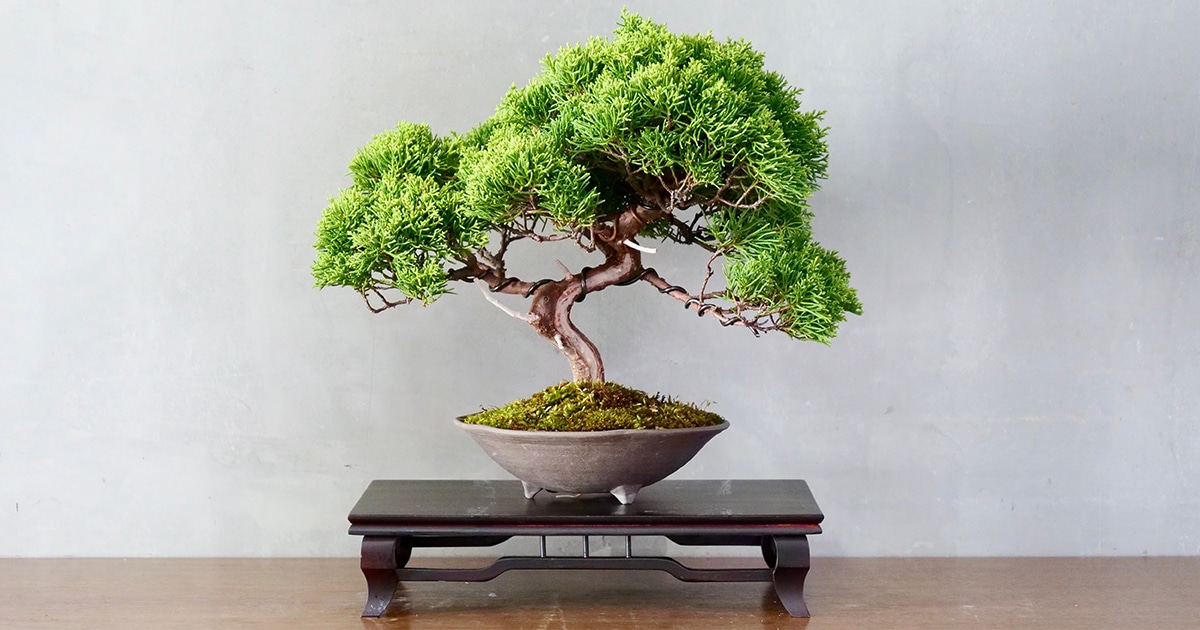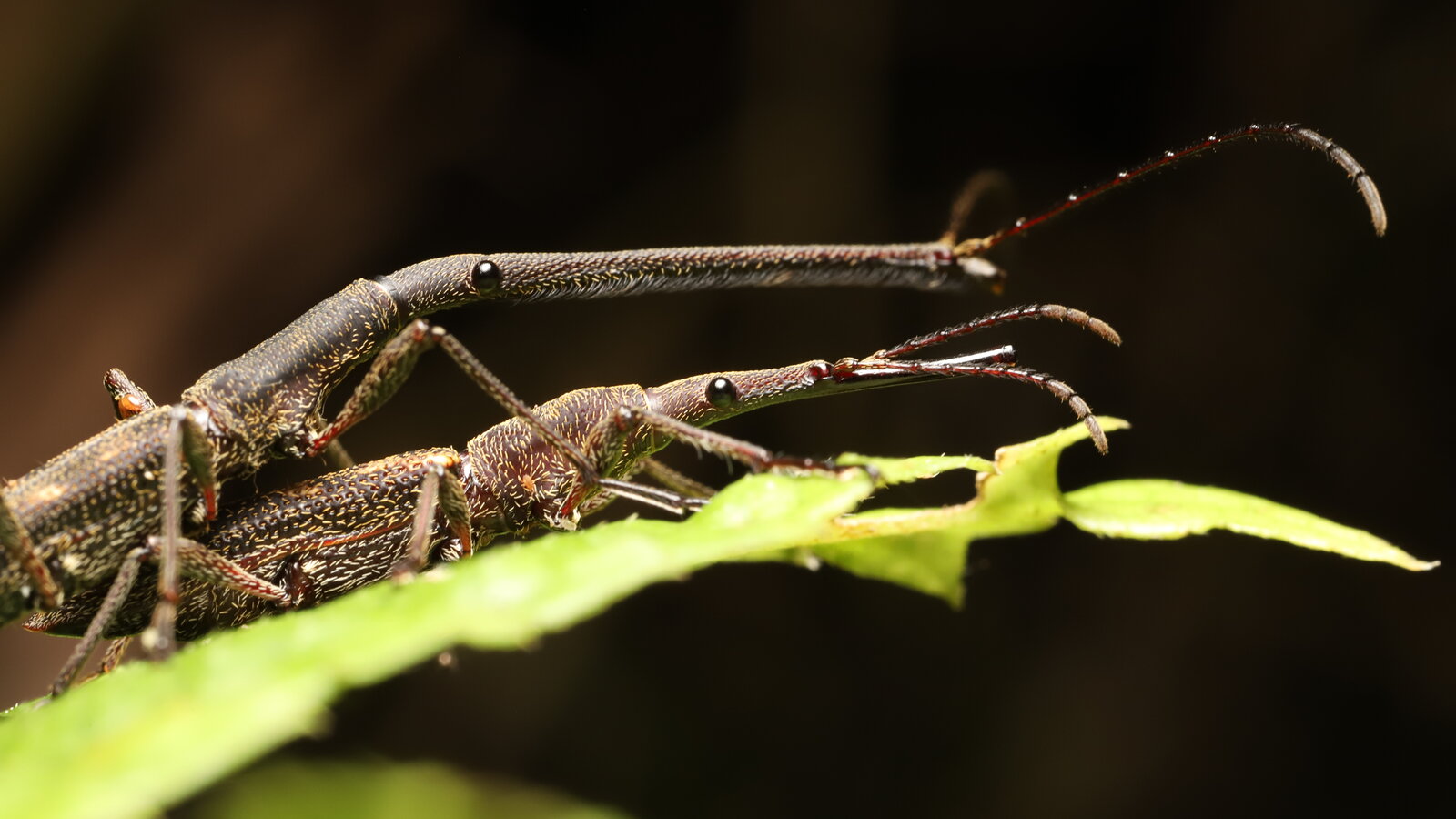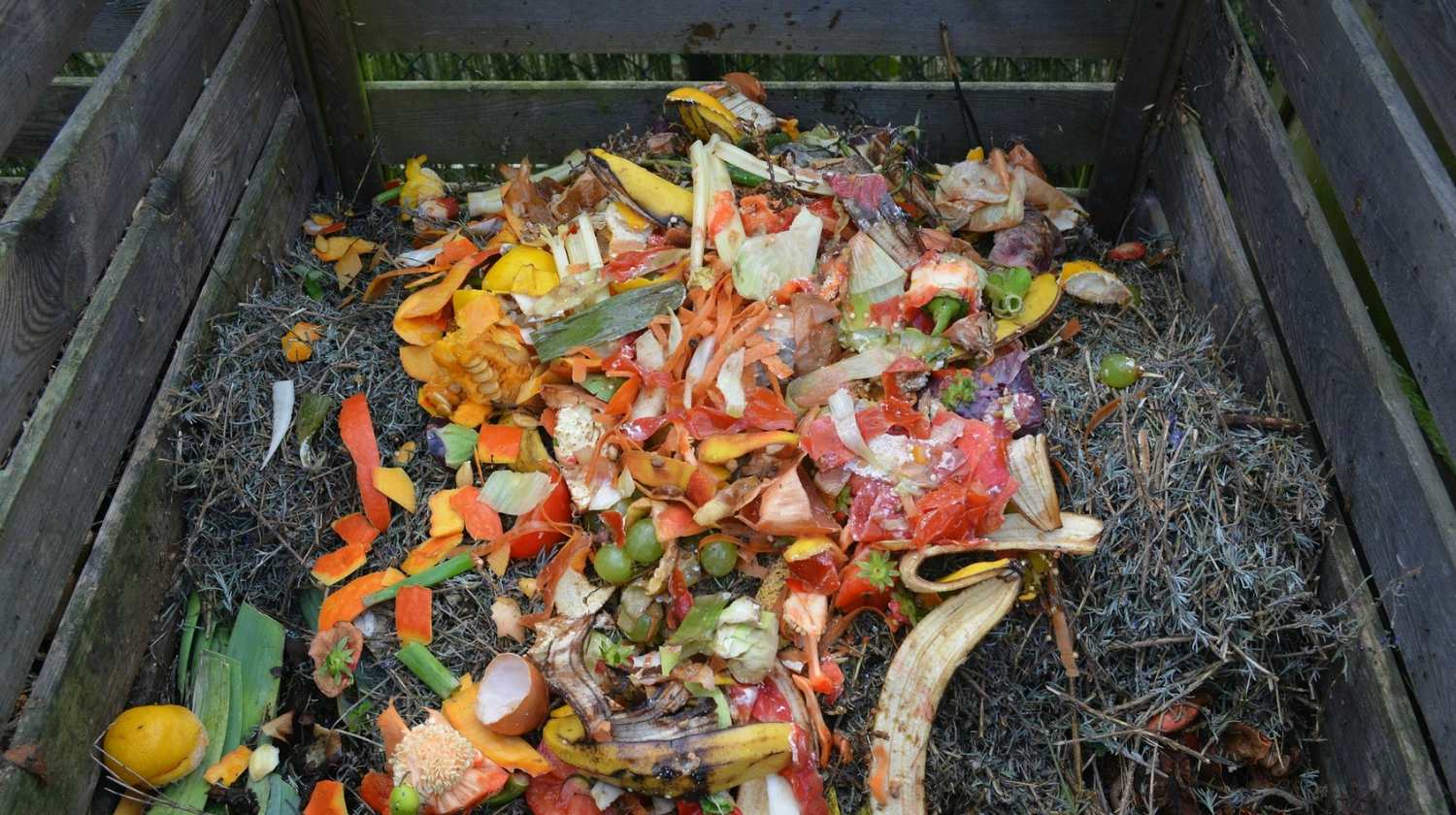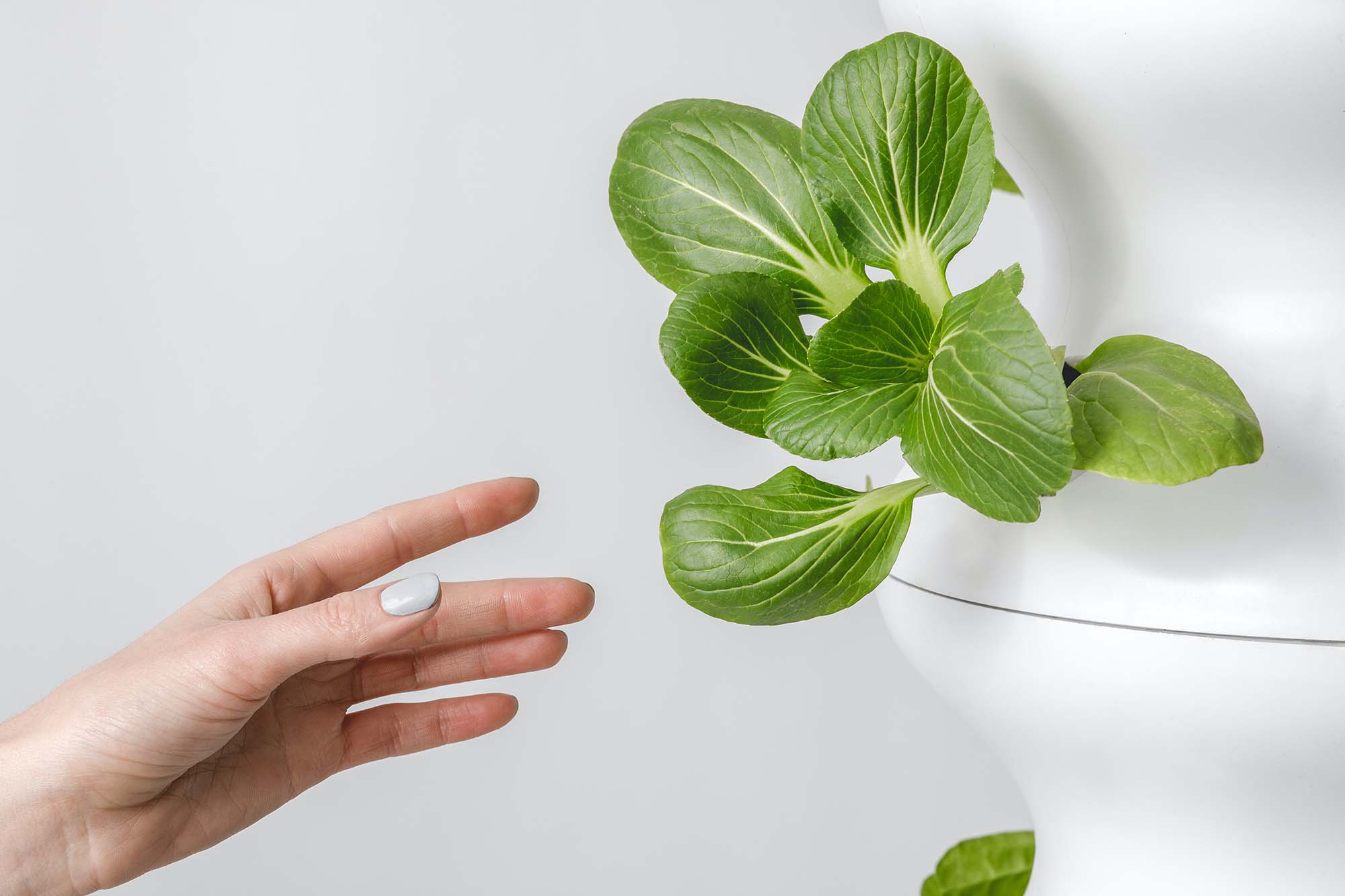Home>Types of Gardening>Ornamental Gardening>What Type Of Bonsai Do I Have


Ornamental Gardening
What Type Of Bonsai Do I Have
Modified: January 22, 2024
Discover the type of bonsai tree you have in your ornamental gardening collection. Learn about different varieties and how to care for them.
(Many of the links in this article redirect to a specific reviewed product. Your purchase of these products through affiliate links helps to generate commission for Chicagolandgardening.com, at no extra cost. Learn more)
Table of Contents
- Introduction
- Understanding Bonsai
- Identifying Your Bonsai Type
- Characteristics of Different Bonsai Types
- Common Bonsai Species
- Identifying Your Bonsai through Leaf Shape
- Identifying Your Bonsai through Trunk Structure
- Identifying Your Bonsai through Flowering Patterns
- Identifying Your Bonsai through Bark Texture
- Identifying Your Bonsai through Root Patterns
- Identifying Your Bonsai through Fruit or Seed Characteristics
- Conclusion
Introduction
Welcome to the captivating world of bonsai! If you are a proud owner of a bonsai tree, you may find yourself wondering, “What type of bonsai do I have?” Identifying the specific type of bonsai you own is a crucial step in understanding its unique care requirements and aesthetic qualities. By recognizing the characteristics and features of your bonsai, you can tailor your maintenance routine to meet its specific needs and ensure its health and beauty for years to come.
Bonsai, derived from the Japanese words “bon” meaning tray or pot, and “sai” meaning tree, is an ancient horticultural art form that has captivated gardeners and enthusiasts for centuries. It involves cultivating miniature trees in containers, mimicking the appearance of full-sized trees found in nature.
Many different bonsai species exist, each with its own distinct characteristics and requirements. From the elegant Japanese Maple to the resilient Juniper, the range of bonsai trees available offers a delightful variety for both beginner and experienced bonsai enthusiasts.
This article will guide you through the process of identifying your bonsai type. We will explore various aspects, such as leaf shape, trunk structure, flowering patterns, bark texture, root patterns, and fruit or seed characteristics, that can help you determine the unique characteristics of your bonsai. Equipped with this knowledge, you will be able to provide the optimal care and appreciation that your bonsai deserves.
Understanding Bonsai
To truly appreciate your bonsai and care for it effectively, it’s important to have a solid understanding of what bonsai is and the principles that guide this ancient horticultural art. Bonsai is not simply a small tree in a pot; it is a living representation of nature, carefully nurtured and sculpted to create a harmonious and balanced composition.
The art of bonsai originated in China over a thousand years ago and was later adopted and refined by the Japanese. It embodies the philosophy of capturing the essence of natural beauty in a miniature form. Bonsai trees are trained and pruned to create an illusion of age, grace, and stability, reflecting the beauty and resilience of mature trees found in nature.
Key principles of bonsai include proportion, balance, and harmony. Proportion refers to the relationship between the various elements of the bonsai, such as the trunk, branches, foliage, and pot. A well-proportioned bonsai creates a visual balance and evokes a sense of harmony. Balance, on the other hand, refers to the distribution of weight and visual elements within the tree. A properly balanced bonsai should have a sense of equilibrium, with no single aspect overpowering the others.
Bonsai care involves a delicate balance of artistry and horticulture. It requires regular watering, appropriate fertilization, pruning, and repotting to maintain the tree’s health and promote its aesthetic appeal. Understanding these care practices is essential to keeping your bonsai thriving for years to come.
Moreover, it’s worth noting that there are various styles and techniques in bonsai cultivation. These styles range from formal upright and informal upright to cascade and windswept, each representing different natural forms and growth patterns. By familiarizing yourself with these styles, you can better appreciate the unique characteristics of your bonsai and learn how to accentuate its inherent beauty.
Now that you have a foundational knowledge of bonsai and its principles, let’s delve into the exciting process of identifying the specific type of bonsai you have. By paying attention to certain features and characteristics, you can unravel the mystery and unlock the secrets of your extraordinary miniature tree.
Identifying Your Bonsai Type
Identifying the type of bonsai you own involves closely observing its unique characteristics, such as leaf shape, trunk structure, flowering patterns, bark texture, root patterns, and fruit or seed characteristics. By examining these features, you can decipher the particular species or style of your bonsai, allowing you to better understand its care requirements and appreciate its individual beauty.
One of the key aspects to look for when identifying your bonsai type is the leaf shape. Bonsai trees exhibit a wide range of leaf shapes, from delicate and serrated to large and rounded. Take note of the size, color, and overall shape of the leaves, as this can provide valuable clues about the species of your bonsai.
The trunk structure is another important factor to consider. Pay attention to the thickness, movement, and bark texture of the trunk. Some bonsai species have thick, gnarled trunks, while others have slender and elegant ones. The texture and color of the bark can also vary significantly, providing hints about the species or style of your bonsai.
Flowering patterns are an exquisite feature of many bonsai trees. Take note of the color, size, and arrangement of the flowers. Some bonsai species showcase stunning blossoms in a range of colors, while others may produce inconspicuous flowers that add subtle beauty to the overall composition.
Examine the bark texture of your bonsai, as it can further aid in identification. Some bonsai species have smooth, rugged, or peeling bark, adding character and visual interest. By feeling the texture and observing its color, you can gather valuable information to narrow down the potential types of your bonsai.
The root patterns of a bonsai can also provide valuable insights. Carefully inspect the roots to determine if they are exposed, radiating from the trunk, or gracefully cascading over the edge of the pot. The root patterns can indicate the style of your bonsai, such as formal upright, informal upright, or cascade.
Lastly, studying the fruit or seed characteristics can shed light on the specific type of bonsai you own. Some bonsai species produce distinctive fruits or seeds, which can be a useful tool in identification. Pay attention to the size, shape, color, and texture of the fruits or seeds, as they can vary greatly among different bonsai species.
By closely examining these various characteristics of your bonsai, you can begin to unravel the mystery and identify its unique type. Understanding the specific species or style of your bonsai will enable you to provide appropriate care, select complementary companion plants, and fully appreciate the distinct beauty and charm of your miniature tree.
Characteristics of Different Bonsai Types
There is a wide array of bonsai types to explore, each with its own distinctive characteristics and aesthetic appeal. Understanding the key features of different bonsai types can help you appreciate their unique beauty and tailor your care routine accordingly.
One common bonsai type is the Juniper. Juniper bonsai trees are known for their resilient nature and elegant appearance. They typically have thin, needle-like leaves that grow in clusters, adding a delicate texture to the foliage. Junipers also often feature twisting and gnarled trunks, which create a sense of age and character.
Another popular bonsai type is the Japanese Maple. These bonsai trees are sought after for their stunning, vibrant foliage. Japanese Maple bonsai trees showcase varying leaf shapes, including palmate (hand-shaped) and dissected (deeply lobed) leaves. They are known for their brilliant autumn colors, with leaves turning shades of red, orange, and yellow.
For those seeking a more tropical feel, the Ficus bonsai is an excellent choice. Ficus bonsai trees have glossy, elliptical leaves that create a lush and vibrant canopy. They are relatively easy to care for, making them a popular choice for beginners. Ficus bonsai trees can be styled with aerial roots, adding a unique and exotic appeal.
The Chinese Elm is another versatile bonsai type with broad appeal. Chinese Elm bonsai trees feature small, ovate leaves that turn shades of yellow, orange, and red during the autumn months. They have a natural, informal growth habit and can be shaped in various styles, including informal upright, broom, or cascade.
For those who appreciate a more minimalist aesthetic, the Shimpaku Juniper bonsai may be a perfect fit. Shimpaku Junipers have dense, compact foliage with small, scale-like leaves. They are often styled in the formal upright or cascade styles, exuding a sense of elegance and simplicity.
One of the most recognizable bonsai types is the Pine. Pine bonsai trees are known for their long, slender needles and rugged appearance. They often have twisted trunks and branches, reflecting the harsh and challenging conditions they endure in their natural habitat.
These are just a few examples of the many bonsai types available. Each type offers its own unique beauty and challenges, providing endless possibilities for bonsai enthusiasts to explore and enjoy.
By familiarizing yourself with the characteristics of different bonsai types, you can select the varieties that resonate with your personal preferences and create a diverse collection that showcases the rich diversity of nature in miniature form.
Common Bonsai Species
When it comes to the world of bonsai, there is an extensive range of species that can be cultivated into miniature trees. Each species brings its unique beauty and characteristics to the art form. Here, we will explore some of the most common bonsai species that you may come across:
1. Juniper: Junipers are one of the most popular species for bonsai. Their hardy nature, small needle-like leaves, and distinctive bark make them ideal for shaping into various styles. There are numerous juniper varieties, including the Chinese Juniper and Japanese Juniper, each with its own aesthetics and growth habits.
2. Japanese Maple: The Japanese Maple (Acer palmatum) is admired for its stunning display of foliage. With its delicate, palmate leaves and vibrant colors in autumn, it is a staple in many bonsai collections. Japanese Maple bonsai can be styled in various forms, such as the broom or cascade style, to highlight their graceful structure.
3. Ficus: Ficus bonsai trees are beloved for their lush, glossy leaves and their ability to tolerate indoor conditions. The Ficus retusa, also known as the Chinese Banyan or Indian Laurel, is a popular choice. Ficus bonsai can be shaped into various styles, from the informal upright to the root-over-rock style, adding visual interest to any collection.
4. Chinese Elm: Chinese Elm (Ulmus parvifolia) bonsai trees are well-known for their natural, rugged-looking bark and small, ovate leaves. They are adaptable and relatively easy to care for, making them a favorite among beginners. Chinese Elm bonsai can be styled in multiple ways, including the formal upright and broom styles, providing a versatile and aesthetic addition to any bonsai collection.
5. Pine: Pines are highly regarded for their distinct long needles and rugged appearance. species such as the Japanese Black Pine and Scots Pine are commonly used for bonsai cultivation. Pine bonsai trees embody a sense of resilience and strength, and their unique features and growth patterns make them captivating additions to bonsai collections.
6. Serissa: Serissa (Serissa foetida) is a delicate and beautiful bonsai species with small, white, star-shaped flowers. They are admired for their petite foliage and graceful branching. Serissa bonsai trees are often styled in the informal upright or cascade style, showcasing their elegant and refined nature.
These are just a few examples of the many bonsai species available. Each species offers its own distinct characteristics and challenges, allowing bonsai enthusiasts to experiment and create unique compositions. Whether you prefer the resilience of junipers, the vibrant colors of Japanese Maples, or the elegance of serissas, there is a bonsai species that will capture your imagination and bring the natural world into miniature form.
Identifying Your Bonsai through Leaf Shape
One of the key elements in identifying the type of bonsai you have is the shape of its leaves. Bonsai trees exhibit a wide variety of leaf shapes, each unique to different species. By closely examining the shape, size, and texture of the leaves, you can decipher valuable clues about the identity of your bonsai.
1. Needle-like Leaves: Many coniferous bonsai, such as pine and juniper species, have needle-like leaves. These leaves are typically thin, elongated, and tapered, resembling the needles of a pine tree. The length and color of the needles can vary, with some species showcasing short, green needles, while others display long, silvery-blue needles.
2. Palmate Leaves: Bonsai species like the Japanese Maple have palmate leaves, resembling the shape of a spread hand. These leaves are usually divided into multiple lobes and radiate outward from a central point, creating a beautiful and intricate pattern. The size and number of lobes can vary among different Japanese Maple varieties.
3. Ovate/Elliptical Leaves: Many bonsai species, including Chinese Elm and Ficus, have ovate or elliptical leaves. These leaves are generally rounded or oval-shaped, with smooth edges. The size and texture of ovate leaves can vary, with some species featuring small and glossy leaves, while others have larger and more textured foliage.
4. Serrated Leaves: Some bonsai species, such as Serissa foetida, have serrated leaves with notched or toothed edges. These leaves have small, pointed indentations along the edges, creating a delicate and intricate appearance. Serissa bonsai trees, for example, are known for their petite, dark green leaves with finely serrated margins.
5. Scale-like Leaves: Certain bonsai species, like Shimpaku Juniper, have scale-like or awl-shaped leaves. These leaves are typically small, flattened, and closely overlapping, giving the appearance of scales or tiny fish-like structures. The color and texture of scale-like leaves can differ depending on the species, ranging from deep green to silvery-blue.
When examining the leaf shape of your bonsai, it’s important to consider other aspects as well, such as the overall growth pattern, bark texture, and any other distinguishing features. By combining these characteristics, you can narrow down the potential species and gain a clearer understanding of the type of bonsai you have.
Remember, leaf shape is just one piece of the puzzle when it comes to identifying your bonsai. It’s essential to consider other factors, such as trunk structure, flowering patterns, and root characteristics, to get a more accurate and comprehensive understanding of your bonsai’s identity. With careful observation and exploration, you can unravel the mystery and appreciate the unique beauty of your bonsai tree.
Identifying Your Bonsai through Trunk Structure
The trunk structure of a bonsai plays a crucial role in identifying its species and style. By closely examining the thickness, movement, bark texture, and overall form of the trunk, you can gather valuable insights about the identity of your bonsai.
1. Trunk Thickness: The thickness of the trunk can give you an indication of the age and maturity of your bonsai. Some species, like the Japanese Black Pine, develop thick and sturdy trunks as they age. Others, such as the Chinese Elm, may have thinner and more delicate trunks, particularly in younger trees.
2. Trunk Movement: Observing the movement of the trunk is another important factor in identification. The trunk may have a straight, upright appearance, leaning to one side, or even have a slight curve or S-shaped bend. These unique movements of the trunk contribute to the overall aesthetic and style of the bonsai.
3. Bark Texture: The texture and color of the bark provide additional clues about the species of your bonsai. Some varieties, like the Juniper, have rough and gnarled bark, which adds a sense of age and character. Others, like the Chinese Elm, display smooth bark with subtle patterns or color variations.
4. Nebari: The nebari, or the surface roots that spread out from the base of the trunk, can provide important insights into the style and health of your bonsai. Some bonsai trees have exposed nebari, accentuating the stability and grace of the overall composition. Others may have roots partially covered by soil, creating a more naturalistic appearance.
5. Trunk Taper: Observe the taper of the trunk, which refers to the gradual reduction in diameter from the bottom to the top. Bonsai trees typically exhibit a noticeable taper, as this creates a sense of visual balance and proportion. A well-pronounced trunk taper can enhance the overall elegance and realism of the bonsai.
By examining the trunk structure of your bonsai, you can start to narrow down the potential species and styles. Keep in mind that certain trees can be styled in various ways, allowing for different trunk structures within the same species. The observation of other factors, such as leaf shape, flowering patterns, and root characteristics, will assist in refining the identification process.
Remember, the trunk is the foundation of your bonsai and sets the stage for the overall composition. Appreciating its unique features and understanding the harmony between the trunk structure and other elements of the bonsai will deepen your connection to this captivating art form.
Identifying Your Bonsai through Flowering Patterns
Flowering patterns are a delightful aspect of many bonsai trees, enhancing their beauty and charm. By closely observing the color, size, shape, and timing of the flowers, you can gain valuable insights into the identity of your bonsai.
1. Flower Color: The color of the flowers can provide important clues about the species of your bonsai. Some bonsai trees, like the Azalea, display vibrant blooms in hues of pink, white, or red. Other species, such as the Crabapple, boast a range of colors, including white, pink, and even deep purple.
2. Flower Shape: Pay attention to the shape and arrangement of the flowers. Some bonsai species exhibit single, showy blooms, while others have clusters or small, delicate flowers. The shape of the flowers can vary from round and full to elongated or tubular, further aiding in identification.
3. Timing of Flowering: The timing of flowering can also assist in identifying your bonsai. Some species, like the Wisteria, typically bloom in the spring, while others, such as the Camellia, may bloom in winter or early spring. By noting when your bonsai flowers, you can narrow down the potential options.
4. Duration of Blooms: Consider the duration of the flowering period. Some bonsai trees have relatively short-lived blooms that last only a few weeks, while others, like the Bougainvillea, can have extended flowering periods that span several months. The length of the blooming period can provide insights into the species and care requirements.
5. Fragrance: Don’t forget about the fragrance! Some bonsai species, like the Jasmine, emit a delightful scent when in bloom. The presence of a distinct fragrance can be a powerful clue in identifying the species of your bonsai tree.
It is worth noting that not all bonsai trees are cultivated for their flowers. Some bonsai species are admired for their foliage, unique bark, or overall form rather than their blooming patterns. However, if your bonsai does flower, observing these characteristics can contribute to the overall appreciation and understanding of your tree.
Remember to consider other identifying factors, such as leaf shape, trunk structure, and root patterns, alongside the flowering patterns. By combining these observations, you can unravel the mystery and better grasp the unique identity of your flowering bonsai.
Whether it’s the delicate petals of an Azalea or the vibrant blooms of a Crabapple, the flowering patterns of your bonsai are sure to bring joy and beauty to your gardening experience.
Identifying Your Bonsai through Bark Texture
The bark texture of a bonsai tree can provide valuable clues in identifying its species and age. By closely examining the texture, color, and overall appearance of the bark, you can gain insights into the unique characteristics of your bonsai.
1. Smooth Bark: Some bonsai species, like the Chinese Elm, display smooth bark with a subtle texture. The smoothness of the bark adds a sleek and polished look to the tree’s trunk. The color of the bark can vary, ranging from shades of gray to reddish-brown.
2. Rough Bark: Other bonsai trees, such as the Juniper, are known for their rugged and textured bark. The rough bark adds visual interest and creates a sense of age and character. The texture of the bark may exhibit furrows, ridges, or even peeling sections, adding to its organic and natural appearance.
3. Exfoliating Bark: Certain species, like the Trident Maple, may have bark that naturally peels or exfoliates in layers. This characteristic can create a fascinating visual effect, revealing different colors and textures underneath. The exfoliating bark gives the bonsai a unique and distinctive aesthetic.
4. Colored Bark: Some bonsai species, such as the Japanese Maple, have bark that changes color throughout the year. The bark of a Japanese Maple can transition from green or brown in the warmer months to vibrant shades of red, orange, and even purple during the fall. The colorful bark adds a captivating element to the overall composition of the bonsai.
5. Unique Bark Patterns: Certain bonsai species, like the Cork Bark Elm, display bark with distinctive patterns. The bark may feature deep fissures, cork-like texture, or even patterns resembling scales or reptilian skin. These unique bark characteristics make the bonsai stand out and contribute to its overall visual appeal.
Examining the bark texture is an essential step in identifying your bonsai. It provides valuable insights into the species, age, and overall health of the tree. When observing the bark, it is helpful to take into account other identifying factors as well, such as leaf shape, trunk structure, and flowering patterns, to get a more accurate understanding of your bonsai’s identity.
Remember that the bark of a bonsai tree can change as it matures and develops. Ongoing observation and documentation of these changes can deepen your connection to your bonsai and allow you to witness its transformation over time.
Appreciating the unique bark texture of your bonsai adds another layer of beauty and fascination to this ancient art form.
Identifying Your Bonsai through Root Patterns
The root patterns of a bonsai tree offer valuable insights into its species, style, and overall aesthetic. By closely examining the root structure, you can gather clues about the identity and health of your bonsai.
1. Exposed Roots: Some bonsai trees feature exposed roots that create a captivating visual display. These exposed roots, known as nebari, can spread gracefully from the base of the trunk, radiating outward in a radial pattern. Bonsai species like the Ficus or Japanese Black Pine often showcase nebari, enhancing the overall beauty and uniqueness of the tree.
2. Surface Roots: Surface roots are another significant indication of a bonsai’s identity. These roots partially emerge from the soil, creating an intriguing and natural aesthetic. Surface roots can be thick or thin, depending on the species, and contribute to the overall stability and balance of the tree’s composition.
3. Aerial Roots: Aerial roots are roots that grow above the soil surface, often descending from lower branches of the bonsai. This root pattern adds an exotic and unique flair to the overall appearance of the tree. Bonsai species like the Banyan Fig or Schefflera are known for their development of aerial roots, creating a captivating and dynamic effect.
4. Root-over-Rock: The root-over-rock style is a popular technique in bonsai cultivation, wherein the roots encircle and cling to a rock structure. This method creates a dramatic display and offers a sense of strength and resilience. Trees styled in the root-over-rock style often have prominent, visible roots that wrap around the rock’s surface.
5. Cascading Roots: Cascading roots create a sense of movement and grace in a bonsai. These roots elegantly cascade down the edge of the pot, contributing to the overall flow and artistic design. Bonsai species like the Bald Cypress or Willow are often styled in cascading forms, showcasing the beauty and organic pattern of the roots.
When examining the root patterns of your bonsai, it’s important to consider other factors as well, such as leaf shape, trunk structure, and flowering patterns. By combining these observations, you can further refine your understanding and identification of the bonsai species.
The roots of a bonsai play a crucial role in its overall composition and vitality. They provide stability, nutrients, and support for the tree, making them an essential element to appreciate and understand in your bonsai journey.
By observing and appreciating the unique root patterns, you can deepen your connection with your bonsai and gain a greater appreciation for its natural beauty and artistry.
Identifying Your Bonsai through Fruit or Seed Characteristics
Fruit or seed characteristics can offer valuable insights into the identity of your bonsai tree. By examining the size, shape, color, and texture of the fruits or seeds, you can narrow down the potential species and gain a deeper understanding of your bonsai.
1. Fruit Shape and Size: Consider the shape and size of the fruits. Some bonsai trees, like the Chinese Quince, produce round or apple-shaped fruits. Others, such as the Olive, may have elongated or oval-shaped fruits. The size of the fruits can range from small, berry-like structures to larger, more prominent fruits.
2. Color of Fruits or Seeds: The color of the fruits or seeds can vary widely among bonsai species. Some trees produce dark purple or black fruits, while others have red, orange, or yellow seeds. Observing the color can provide valuable insights into the type of bonsai you have.
3. Texture of Fruits or Seeds: The texture of the fruits or seeds can also aid in identification. Some species have smooth, glossy fruits, while others may have rough or textured surfaces. Paying attention to these textures can provide important clues about the species of your bonsai.
4. Seed Pods or Capsules: Certain bonsai trees produce distinctive seed pods or capsules as part of their reproductive cycle. These structures can be unique in shape, size, and arrangement. Observing the characteristics of seed pods or capsules can narrow down the potential species and aid in accurate identification.
5. Edible Fruits: Some bonsai species, such as the Citrus or Fig, produce fruits that are not only visually appealing but also edible. If you have a bonsai that bears edible fruits, this can provide a significant clue about its identity. Carefully observe the size, color, and taste of the fruits for further identification.
When studying the fruit or seed characteristics of your bonsai, it’s important to consider other identifying factors, such as leaf shape, trunk structure, and root patterns. By combining these observations, you can gain a more comprehensive understanding of your bonsai tree’s identity.
Remember, not all bonsai species produce fruits or seeds, and some may only do so under specific conditions. However, when your bonsai does provide these offerings, they add an extra element of interest and beauty to your miniature tree.
Appreciating the unique fruit or seed characteristics of your bonsai enhances your understanding and connection with the tree, revealing the wonders of nature in miniature form.
Conclusion
Identifying the type of bonsai you have is an exciting and rewarding process that deepens your understanding and connection with your miniature tree. By observing and analyzing various characteristics such as leaf shape, trunk structure, flowering patterns, bark texture, root patterns, and fruit or seed characteristics, you can unravel the mystery and unlock the secrets of your bonsai’s identity.
Through close examination of these features, you can determine the species, style, and unique qualities of your bonsai. This knowledge is invaluable in providing tailored care, selecting appropriate companion plants, and appreciating the distinct beauty of your bonsai.
Remember that identifying your bonsai is not an exact science, and it may require further research and consultation with experts. Some bonsai trees exhibit characteristics that overlap between species or display variations due to cultivation or environmental factors. Therefore, it is important to consider multiple identifying factors while determining the identity of your bonsai.
Embrace the journey of identifying your bonsai, and enjoy the process of discovering its unique qualities. As you delve deeper into the world of bonsai, you will continue to enhance your knowledge and appreciation for this ancient art form.
Now armed with this understanding, you can confidently care for your bonsai, provide it with the optimal conditions, and further cultivate its beauty and vitality. Explore the range of bonsai types, experiment with different styles, and continue to learn and refine your bonsai skills.
May your bonsai bring you joy, tranquility, and a connection to the wonders of nature, serving as a reminder of the beauty that can be found in even the smallest of trees.
